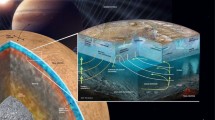With the aim of obtaining preliminary estimates, the Monte Carlo method has been used to solve the nonstationary equation of laser sensing of an optically dense, complex, multicomponent aqueous medium by a monostatic lidar equipped with a photodetector array mounted on board an aircraft. The influence of the air–water interface, the contribution of multiple scattering of radiation by the water column, and reflection of the signal from the bottom are all taken into account. Estimates of the dependence of the power of the lidar signal recorded from the surface and the bottom have been obtained for different optical characteristics of the medium and brightness of the solar illumination. The field of view of the photodetector array is translated along the direction of flight of the aircraft with relatively low velocity. A combined image of the investigated space is obtained by joining together the sequentially taken rectangular images. Here, each pixel of the frame images distance and the sum of all these pixels gives a three-dimensional image of the ocean surface and bottom. Results of statistical simulation show that a lidar system for sensing the ocean water column using a detector array can be realized on a level that can justly be termed state-of-the-art. Under favorable conditions, it is possible to sense water depths up to 44 m.
Similar content being viewed by others
References
H. H. Kim, Appl. Opt., 16, No. 1, 46–56 (1977).
K. Fredriksson, B. Galle, K. Nyström, et al., Underwater laser-radar experiments for bathymetry and fishschool detection: Report GJPR-162, Göteborg Inst. Phys., Göteborg (1978).
V. S. Shamanaev, I. É. Penner, G. P. Kokhanenko, and G. P. Krekova, Nauka – Proizvodstvu, No. 9(65), 20–23 (2003).
V. A. Gladkikh, V. G. Lizogub, G. P. Kokhanenko, and V. S. Shamanaev, Prib. Tekh. Eksp., No. 1, 85–88 (1996).
V. S. Shamanaev, A. I. Potekaev, A. A. Lisenko, and M. G. Krekov, Russ. Phys. J., 59, No. 12, 2034–2040 (2017).
T. J. Petzold, Volume Scattering Functions for Selected Ocean Waters, Institute of Oceanography, Visibility Laboratory, San Diego (1972).
Author information
Authors and Affiliations
Corresponding author
Additional information
Translated from Izvestiya Vysshikh Uchebnykh Zavedenii, Fizika, No. 6, pp. 122–127, June, 2017.
Rights and permissions
About this article
Cite this article
Lisenko, A.A., Potekaev, A.I. & Shamanaev, V.S. Statistical Estimates of Lidar Signals Reflected from the Ocean Bottom, Using a Lidar Equipped with a Photodetector Array. Russ Phys J 60, 1056–1063 (2017). https://doi.org/10.1007/s11182-017-1178-4
Received:
Published:
Issue Date:
DOI: https://doi.org/10.1007/s11182-017-1178-4




